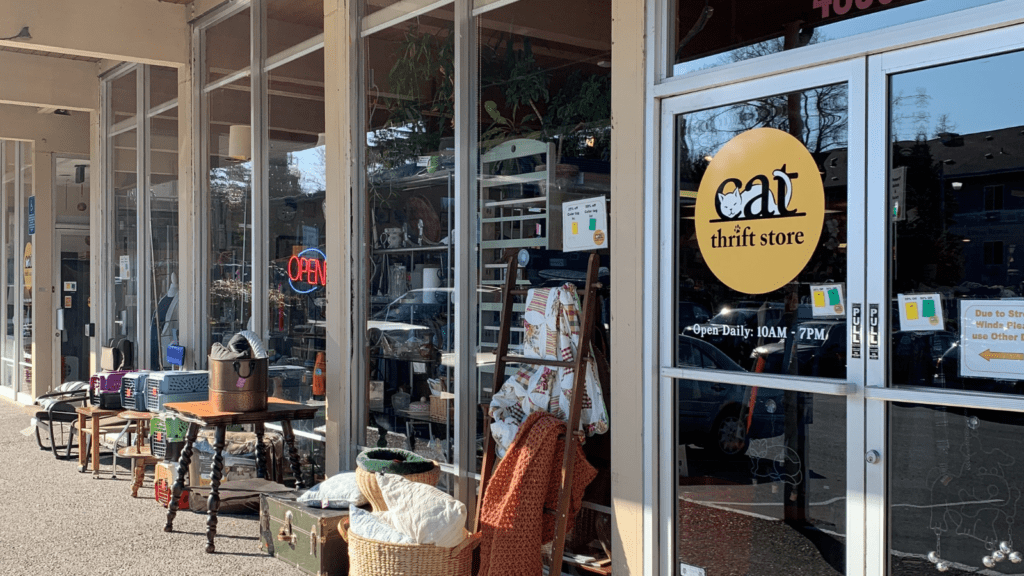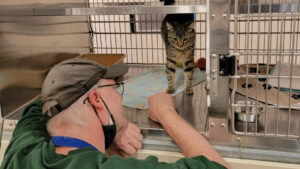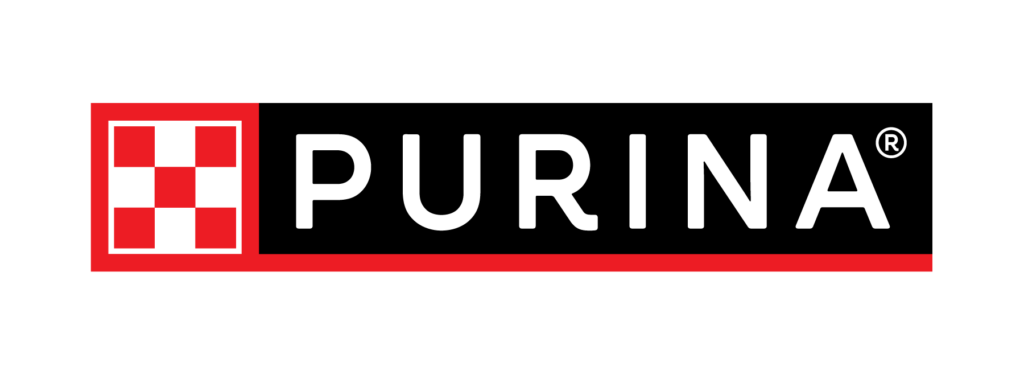May 27, 2021 — Reduce. Reuse. Recycle. Many of us want to make the world a better, cleaner place. Thrift store donations are on the rise. This is mostly good news for the environment and for charitable causes. After all, lots of people donating their cast-offs means fewer items hitting landfills and more funds for your favorite thrift store’s mission.
But some donated goods don’t do much good.
Recent stories on NPR and the Associated Press highlight how donations of unusable items cost charities time and money. Portland’s own CAT Thrift Store is no exception.
“Most of the items people give us are excellent,” shares Bobbie Winchell, CAT’s thrift store and retail manager, “but there’s a lot of ‘wishful thinking’ that happens too.”
Folks might imagine that someone who is better with a saw or sewing machine will purchase and repair their damaged donation, but Bobbie says that’s unlikely. “People just don’t realize that almost no one wants to take on a broken project, usually because the cost to fix it is even higher than buying new.”
To reduce waste, CAT Thrift Store partners with other Portland nonprofits and recyclers, like Free Geek, Community Warehouse, and SCRAP Creative Reuse, whenever possible. But options are limited and most aren’t free. Unusable donations—even recyclable goods—can divert funds from the mission.
Bobbie says CAT expects to spend $3,000 or more this year to discard broken items and other goods that can’t be sold at the thrift store. That figure doesn’t include special fees for things like microwaves, fluorescent light bulbs, or sharps (ew—please don’t donate needles!).
“It costs $25 every time we have to take a microwave for recycling,” explains Bobbie. “It’s great that the metal will get reused, but that’s $25 we can’t spend on caring for cats, and that’s not what the donor wanted.”
Donating used goods is awesome, and most donors have good intentions! So how do you make sure the items in your “Donate” pile are treasures not trash?
Here are 7 tips to make a better thrift store donation:
- Ditch damaged kitchenware. Chipped plates, nicked glasses, and pots or pans with peeling or scratched nonstick coating aren’t safe to use or sell. Toss these out.
- Pitch plastic food containers. Most of these are cheap to buy new and not intended to last for long. Chances are if you’re done with it, it’s done.
- Chuck the bad books. Books with mold or water damage can’t be resold, so recycle your damaged paperbacks and throw out hardbacks if they’re in bad shape.
- Hold off on holiday items. If it’s out of season, wait to donate until closer to the holiday. Most thrift stores don’t have space to hold onto items for long and will have to pay to store or discard these items.
- Dollar décor doesn’t resell. Because it’s already so inexpensive to buy new, décor from dollar stores is rarely purchased used; keep it for your next party or put it in the garbage.
- Fix it or leave it. If you won’t spend the time and money to repair a damaged item, chances are no one else will either. Broken goods simply don’t make for a good donation. If it’s a favorite, fix it. Otherwise, it’s just trash.
- Leave out the hazardous waste! Personal-use items (such as sex toys, used undergarments, or bongs/pipes) may be considered biohazards and probably can’t be resold. And always check for and clean off biowaste (like blood or vomit) from any donations. Clean, sanitized items have a better chance of resale; unwanted intimate items should be disposed of, not donated.
During the pandemic, many thrift stores had to cut back on hours and staffing. An overload of donations filled up stores’ storage space too. As a result, more thrift stores are requiring drop-off appointments and turning away unsellable items. Bobbie says she realizes this can be frustrating for donors, but hopes people will continue to give.
“We don’t want people to stop donating!” Bobbie explains. “That’s not it at all. We hope this info helps people make good donation decisions because we value their time and efforts.”
Want to give your unwanted goods a new home and help cats too? Check out the CAT Thrift Store’s donation guidelines and then make a donation appointment to bring in your stuff. The people and kitties at Cat Adoption Team will thank you!
Previous
Next
A sampling of recent CAT Thrift Store donations that are too damaged to be resold. The nonprofit store partners with other local charities and recyclers to dispose of such items responsibly, but disposal fees divert funding from the cause.







